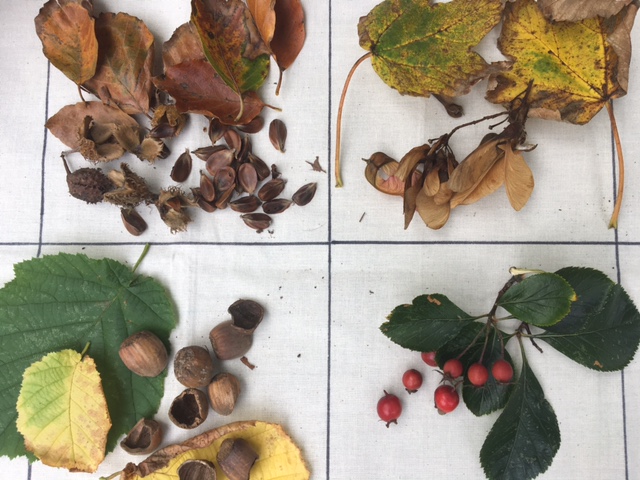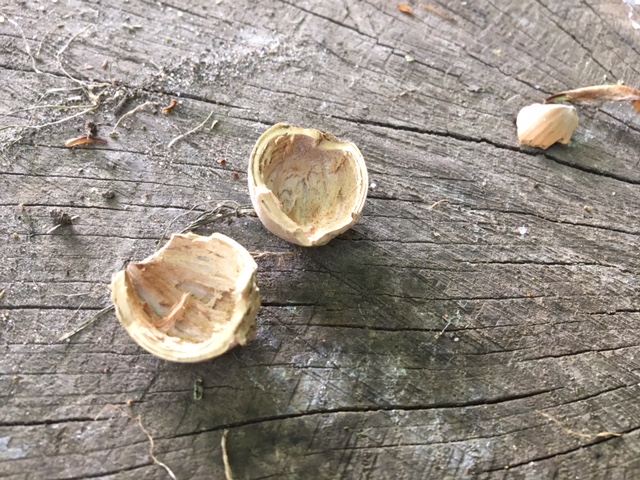
Autumn is an important and busy feeding time for many animals to build up their body reserves in readiness for the approaching winter; to prepare for hibernation or for gathering and burying food caches for leaner times ahead.
Although many animals are secretive, nocturnal, or both – they leave tell-tale feeding signs behind if you know where to look. Here are some tips to learn about wildlife without even seeing them.
A rich bounty
Trees and hedgerows are now full of summer’s bounty, such as the bright red berries of hawthorn, rosehips and rowan, sloes, crab apples and ripening ivy berries. Conkers and sweet chestnuts lie hidden within their prickly protective cases, whilst tiny triangular beech nuts litter the ground. There is a bonanza of food to eat or store.
Fruits and berries (particularly the seeds inside) and nuts are full of oil, starch and proteins making them highly nutritious sources of food.
Activity – ‘We’re going on a nut hunt’
Hazelnuts are a favourite food for many creatures but the kernel inside is protected by a thick, hard shell. However, this works as an advantage to a nature detective because by looking carefully at the teeth or beak marks left on the shell can reveal who has eaten them. So, when a hazelnut has been found look for the following features:
- Grey squirrels learn how to expertly split a hazelnut into 2 halves, leaving large teeth marks on the apex / top of the shell (see photo below).
- Wood mice gnaw a fairly neat, round hole with small teeth marks on the outer edge / rim of the hole.
- Great tits punch a small, neat hole into fresh, green nuts – look for their fine beak marks.
- Great spotted woodpeckers smash open the side of the nut leaving a large untidy hole.
Groups really enjoy this hunt and detective work. There is a variety of ‘animal tracks and signs’ guide books to help with identification. I usually photocopy and laminate pages to use easily outdoors.

Where to look: Squirrels often have a favourite feeding site and tree stumps make the perfect dining table. From this raised vantage point, they can both eat and look for danger, leaving their feeding signs behind in little piles. In school grounds, you could place a tree log beside a hedgerow and bait it with some collected hazelnuts – then wait to see who’s visited.
Mice and voles also use a favourite feeding spot usually safely hidden away, to feed or hide a hoard of nuts, so look around and under logs. You might spot a small hole in the ground – this leads down to their underground tunnel where they gather and store food to eat during the winter. ‘Restocking’ piles of discarded, gnawed shells can often be found outside the hole from the previous winter – another tell-tale sign of activity.
Great spotted woodpeckers use an ‘anvil’ such as a crack or crevice in a tree trunk to wedge in a hazelnut, usually placed base downward, and peck in a line which easily splits the nut lengthways. You’ll also spot lots of discarded broken nutshells on the ground below.

Now that you’re underway, keep practicing – there are many other feeding signs to look for such as nibbled fir cones, acorns and wild cherry stones. Who has been visiting in your neck of the woods?
